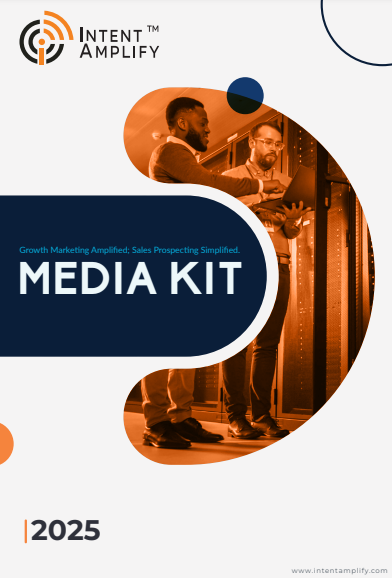
B2B Sales Funnel Automation Challenges in 2025 and How to Overcome Them
- Last updated on: June 30, 2025
In 2025, nearly every B2B organization claims to have “automated” its sales funnel. And on paper, most do – CRM integrations, email sequences, chatbots, and lead scoring tools tick all the boxes. Yet, conversion rates are lagging. Funnel velocity is slower than ever. And revenue leaders are frustrated.
Based on a 2025 Forrester report, 58% of B2B marketers indicate their automated funnels produce more leads, but only 21% indicate those leads are ready for sales. That disparity is symptomatic of a more profound problem: automation tools do not fix for strategy, context, or timing. Without proper human-machine alignment, the sales funnel is a machine that’s constantly running—but not necessarily always working. This article looks at the B2B sales funnel automation challenges brands are confronting in 2025, and how to address them with smarter processes, improved data, and thoughtful tech decisions.
1. Fragmented Tech Stacks Are Killing Funnel Fluidity
On the surface, most B2B stacks appear “complete.” Marketing is using HubSpot or Marketo. Sales resides in Salesforce or Freshsales. There are tools for outreach, enrichment, calendaring, ABM, and so forth. But here’s the issue—these systems typically don’t communicate with one another in real-time. Fragmentation creates two kinds of breakdowns:
- Operational silos: Marketing dumps leads into sales, but intent signals and behavioral information don’t travel with them. Therefore, sales reps begin with cold even from warm leads.
- Data duplication or decay: Leads usually get scored or segmented from old or duplicated data points, resulting in wasted outreach.
How to Fix It:
- Invest in a centralized revenue operations platform such as Gong, LeanData, or RevOps.io, which syncs customer information across tools in real-time.
- Use dynamic enrichment APIs (such as Clearbit or Cognism) to automatically update leads throughout each stage of the funnel.
- Use consistent funnel analytics that allow you to view where drop-offs occur—not merely by stage, but by campaign, channel, and persona.
2. AI Lead Scoring Without Context Misses the Mark
In theory, lead scoring with AI should enable reps to concentrate on the appropriate accounts. In practice, most rely too much on firmographics and previous clicks, paying no attention to buyer intent or urgency signals.
The problem isn’t the AI—it’s the absence of contextual training. For example, downloading an ebook does not mean a lead is ready to buy. But if that same lead had also requested a demo and looked at the pricing page three times in 48 hours, that’s a much different signal.
How to Fix It:
- Move away from rudimentary lead scoring to intent-based orchestration on tools like Intent Amplify.
- Construct models that account for multi-touch trips, not independent actions. An attendee at your webinar and follower of your product news on LinkedIn may be more valuable than a cold request for a demo.
- Embed buyer intent data providers (such as Bombora or G2) to include third-party activity in your models.
3. Over-Automation Is Alienating Buyers
In a hurry to grow, numerous B2B marketers have over-automated the bottom and middle of the funnel. Think: generic nurturing emails, tired cadences, robotic chatbot replies.
Buyers, particularly financial, technology, and operations decision-makers, are beginning to tune out. They need useful content, not constant nudges. And in 2025, they’re more judicious than ever.
How to Fix It
- Map decision-stage-specific content to every section of the funnel. Leverage actual questions from sales calls (using tools such as Gong or Chorus) to inform content creation.
- Combine automation with human touchpoints. A 2-minute personalized Loom video from a salesperson can beat a month of emails.
- Use behavioral triggers, not time-based drips. For instance, only send a product comparison email if someone looked at your competitor’s site or searched for your pricing.
4. Intent Signals go Unheeded or Misunderstood
There are a lot of teams gathering intent data, but not many of them are putting it into action significantly. Either they don’t believe the data, don’t understand what it says, or they lack the operational capability to respond to it quickly. Even worse, sales and marketing tend to see the same signal differently. A spike in whitepaper downloads may lead marketing to cheer and sales to overlook it. Why? Because they are not on the same page regarding what intent looks like.
How to Fix It:
- Conduct shared workshops where marketing and sales agree on intent thresholds.
- Establish real-time notifications for high-value actions: visits to the pricing page, competitor comparisons, and decision content at night.
- Create intent playbooks by persona. If a CFO is demonstrating intent, lead with ROI content. If it’s a security lead, nudge certifications or compliance sheets.
5. Metrics Focus on Volume, Not Velocity or Value
In too many dashboards, success still looks like this: more MQLs, more emails sent, more meetings booked. But in 2025, B2B sales are about velocity (time from lead to deal) and value (deal size, stickiness, and win rates).
If you’re not tracking how automation impacts these metrics, you’re missing the point.
How to Fix It:
- Shift your KPIs. Track funnel acceleration metrics like time-to-first-response, time-to-qualified-opportunity, and deal-stage velocity.
- Layer CLTV and CAC in to see which channels are profitable once automated.
- Utilize tools such as Clari, InsightSquared, or People.ai to tie your marketing signals to pipeline forecasting.
6. Sales Still Doesn’t Trust Marketing Automation
Call this out. Too many B2B sales leaders continue to give low-priority attention to marketing automation leads. Why? Because they’ve been burned by irrelevant leads, bloated scores, or lost context. It’s not a technology issue. It’s an alignment and trust problem.
How to Solve It:
- Co-own lead scoring models with sales. Allow reps to direct the weightings based on actual results.
- Share the outcomes of automations weekly. Display to reps how and why things are being done automatically. Transparency breeds trust.
- Provide sales enablement micro-trainings on when and how to respond to certain funnel automations.
Remember: no automation system will ever succeed without buy-in by the people who are supposed to use it.
Automate Intention, Not Imitation
The highest-performing B2B funnels in 2025 aren’t those that automate all the things. They’re the ones that automate the things that matter—the tedious, the repetitive, the data-intensive—and leave human strategy and creativity at their center.
Automation is not the objective. Conversion is.
To arrive there, you must marry tech with timing, data with context, and automation with human judgment. And most importantly, you must constantly test and iterate. Because in a market that evolves this quickly, even your best automation sequence has a shelf life.
FAQs
Q1: What’s the biggest mistake companies make with B2B funnel automation?
The largest error is automating blindly. Most teams deploy tools to broken processes, and that only amplifies the inefficiency.
Q2: How can I tell if my funnel automation isn’t performing?
Watch for warning signs such as high MQL volume but low SQL conversion, extended deal cycles, or high bounce rates on nurture flows. These signal friction in your funnel and reflect deeper B2B sales funnel automation challenges.
Q3: What tools can help optimize without burdening the team?
Begin with tools that streamline and consolidate workflows, such as HubSpot for single-point visibility, 6sense for intent activation, and Gong for customer insight.
Q4: Would automation make SDRs obsolete?
No. Automation can augment SDRs by providing higher-quality leads, personalization of outreach, and time-saving. It cannot replicate human relationship-building.
Q5: Where do I begin if I’m reevaluating my funnel strategy for 2025?
Begin with your buyer journey map. Determine friction points, intent signals, and decision moments. Then automate where it brings the greatest value and resolves your B2B sales funnel automation challenges.




